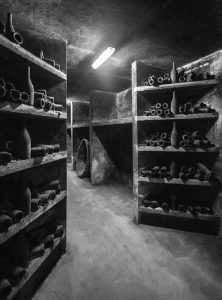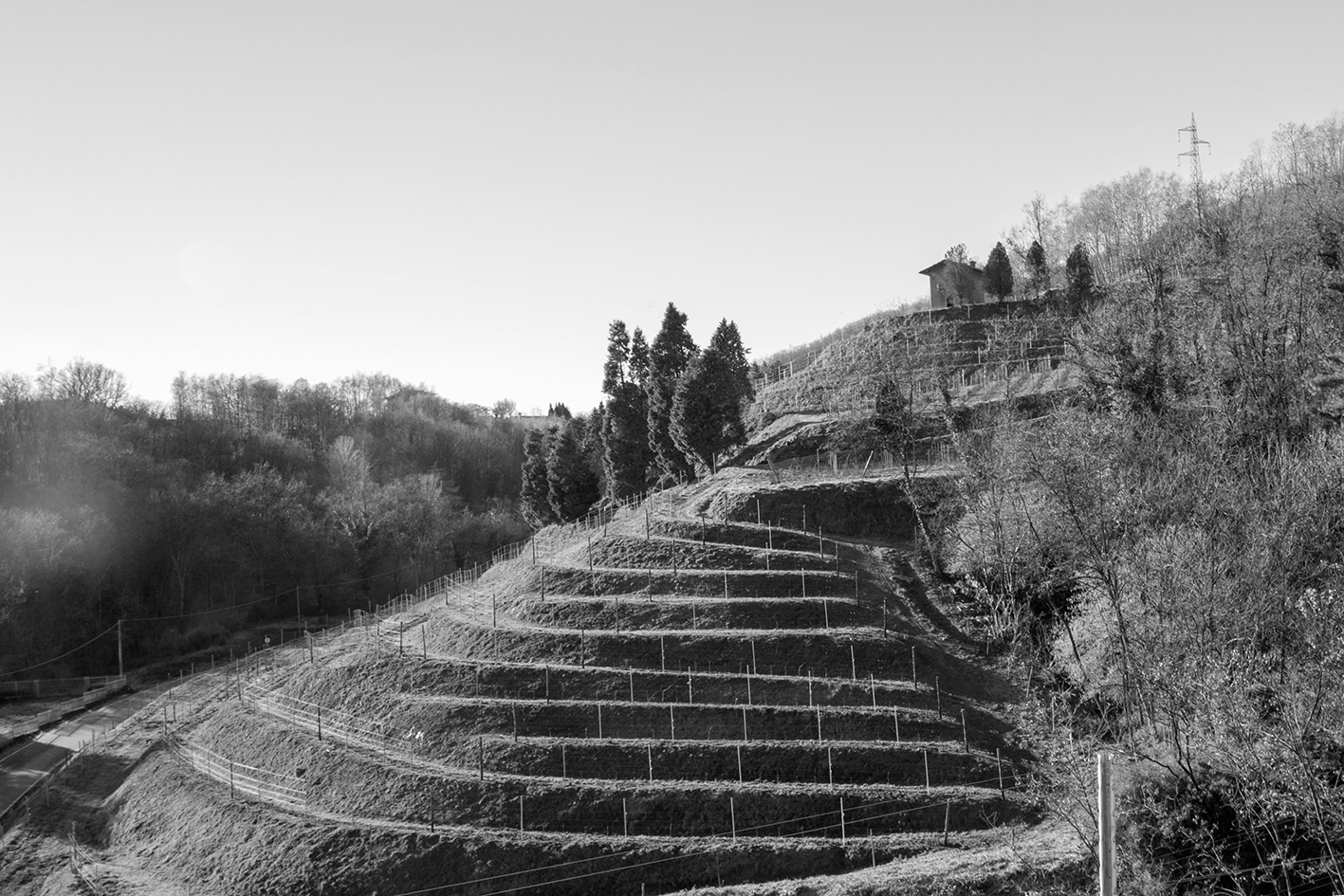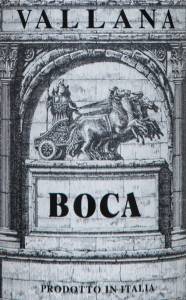As DA’s first foray into Italy we have certainly picked an eclectic place to start with Alto Piemonte. We were delighted to be able to work again with Vallana, a producer, much admired since first encountering them at Richards Walford.
Alto Piemonte is in the top North West corner of Italy, 100km north of Barolo, heading towards the border with Switzerland. This region, often viewed as Barolo’s poorer neighbour, is a lesser known haven for Italy’s classic Nebbiolo grape, locally known as Spanna. The region suffered badly economically during the two world wars, gradually losing some of its traditional industries and originally had a much larger area under vine, now considerably diminished, spread over lots of tiny parcels, with some sites having disappeared altogether beneath woodland.
The region’s wines have seen a renaissance in recent years with more investment in re-establishing and consolidating vineyards, as land can still be purchased relatively much less expensively than in Barolo or Barbaresco. The wines remain at more approachable prices, extremely good value, particularly with their noted longevity in bottle.
The name itself Antonio Vallana e Figlio evokes the family’s long and honourable history, based in the heart of the region, in Maggiora and their website proudly proclaims 5 generations in wine.

The fifth and current generation is represented by Marina and Francis Fogarty, sister and brother, who have fully taken charge of the winemaking and running of the family estate over the last 10 years. Marina describes things as “in one way nothing has changed, and we are very faithful to our legacy of traditional wines from the region” for which they have many long-standing customers. However, they are both keen to see a progression and combine modernity with tradition.
Their great-grandfather Antonio and grandfather, Bernardo, formerly established the family business as Antonio Vallana e Figlio, following on from Antonio’s uncle, who inherited the estate in 1859. He had seen the market potential to commercially produce and sell wines for export to Germany and Switzerland, capitalising on the newly opened (1905) Simplon Railway Tunnel.
Bernardo’s daughter Giuseppina married Englishman, Guy Fogarty, in 1980, who Bernardo carefully tutored in winemaking skills. They achieved some international acclaim for the estate in the 1980s and early 1990s, gaining recognition for the quality and longevity of the wines, until Guy’s death in 1996.
Marina and Francis make a formidable team and bring a wealth of intelligence and exploring minds to bear on everything they do. Giuseppina still works at the winery every day, keeping an eye on the office admin.
Marina began working full-time in the winery from around 2009, which she combined with travelling to London to study for her WSET qualifications and completed both her Diploma and certified WSET Educator qualifications. After which she returned to work part-time at the winery, while she completed her PhD in Philosophy. She then tirelessly moved on to begin her MW studies in 2016, but felt with the birth of her 2 children, that full-time dedication to them and running the family winery was probably enough to be dealing with! That said, she continues to teach WSET courses locally in the region on a regular basis.
Francis completed a degree, masters and PhD in winemaking and is a qualified enologo (oenologist). He gained experience travelling to work at other wineries, to bring a wealth of skills to focus on the family estate’s winemaking. Marina manages all the sales and marketing internationally and is a passionate and articulate ambassador for her family’s wines, very conscious of the need to help them gain an understanding of the region and the styles Vallana has to offer.
Alto Piemonte is in the Alpine foothills, a mountainous, cool climate region, influenced by the fresh winds from the Alpine glaciers tempering the higher afternoon temperatures in the growing season. The vineyards are generally at a higher altitude, ranging from 300 to 450m above sea level. The region benefits from a cooler, broader range of diurnal temperatures compared to Barolo in the Langhe, further to the south and harvesting is generally 7 to 10 days later. This climate combined with the distinctively acidic soils in the area, combine to give the wines higher acidity, minerality and their great capacity for ageing.

There are effectively 7 Alto Piemonte ‘Cru’ villages: Ghemme and Gattinara as DOCG; Boca, Fara, Sizzano, Lessona, Bramaterra as DOC. The Colline Novarese DOC covers vineyards on the west side of the River Sesia Valley.
Vallana’s own vineyard holdings are in Boca and Gattinara, which they have always traditionally combined with working contractually, with many small producers in the region. They work around 10 ha in total. Francis and Marina have overseen the gradual renovation and replanting of their own holdings, which began in 2013 and have worked with other producers to continue their production. This has also allowed them to review the sources of their contract grapes in terms of achieving the style of the wines they are seeking to offer. All harvesting in the region is by hand.
Winemaking
Marina & Francis have reverted to using concrete tanks for fermentation, as well as for some maturation and storage. They are still in the process of refurbishing some of the tanks dating back to their grandfather’s era. They find them more effective for the natural temperature control they offer and their capacity to ensure a slow evolution of any wines stored, keeping it in prime condition until required for bottling.
Nebbiolo is generally destalked, crushed and left to cold soak for 24 hours before inoculation with natural yeasts, with pumping over 2-3 times a day for around 10 days, before racking off into tank or barrel. They are working more and more with 500L to 1000L 2 – 3-year-old wood casks, preferring these to the larger 3000L traditional barrels.

The wines
Vallana’s distinctive labels almost have an antique, dusty feel to them. Their label depicts a Roman triumphal chariot, commemorating the victory of Consul Gaius Marius and General Quintus Lutatius Catulus’ army in 101 BC. The label design was commissioned by their grandfather to symbolise linking the history of the region’s winemaking tradition and Latin culture. The Campi Raudii label epitomises the proliferation of old vineyard names and labels which existed in their grandfather’s time, now buried under strict labelling bureaucracy restricting what is allowed on the label, but they hope to rejuvenate more of these in the future.
The wines themselves, however, are full of life, displaying the classic regional acidity and minerality that Marina describes as the true expression of Alto Piemonte. They continue to investigate and experiment in everything they do, to ensure their winemaking and wines preserve this expression of terroir, making the most of the distinctive sites they work with.
They see their range in 2 parts:
Young approachable wines which include a recently added white and rosé, not currently listed here:
Piemonte Barbera DoC (100% Barbera)
This is their very accessible Barbera, which Marina describes as having good acidity and a juicy, red fruit flavour profile. This fresh, young style is fermented and stored in concrete before bottling, with plenty of demand locally, as well as internationally.
Campi Raudii Vino da Tavola (Nebbiolo 70% Vespolina 30%)
‘Campi Raudii’ is one of the ancient Latin names for Alto Piemonte, which roughly translates as ‘red fields’ referring to the typical colour of the volcanic soils. It is fermented and then matured in concrete vats and is intended as a young, approachable expression of Nebbiolo, with the softening and spicey contribution from Vespolina as proportion of the blend. Less overtly tannic that the classic DOC and DOCG expressions.
Spanna Colline Novaresi DoC (100% Nebbiolo)
Marina describes Spanna as the classic expression of Alto Piemonte and equates it to ‘villages’ level in relation to the 7 individual ‘Cru’ from the region. They felt they could improve on this very traditional wine, moving to 100% Nebbiolo with grapes sourced from vineyards offering a slightly richer, less austere style of Nebbiolo on less acidic, more alluvial soils. This also meant they could drop the addition of Vespolina, which had historically been part of the blend. Fermented in concrete. There is no actual requirement for oak ageing under the Spanna Colline Novarese DOC, but they elect to age for 12 months in 2 to 3-year-old 500L tonneaux and it has an average of 3 years ageing before release. They are seeking to offer a classic expression of the region with good acidity and elegance, but also with good capacity to age in bottle.
Their classic, ‘cru’ wines with potential for long ageing:
The wines of Boca and Gattinara are distinct from all the other ‘Cru’ in that they both come entirely from vineyards on the lower slopes of the caldera formed by the explosion of the super volcano in the Sesia Valley.
The dramatically sloped, terraced, vineyards are on acidic volcanic rocks with virtually no top soils, forcing the vines to burrow down their roots in search of water and nutrients, which is impacts on the finesse and complexity that can be derived from the grapes grown here.
Boca DoC (85% Nebbiolo 15% Vespolina)
Boca and is on the western side of the River Sesia and is a little more sheltered from the north and tends to be picked slightly later, offering a little more subtilty in the finished style. The inclusion of Vespolina in the blend acts as a foil, softening the structure and power of the Nebbiolo. Vinified in large cement tanks, matured for a minimum of 18 months to 2 years in 500L oak and with a minimum of 1 year in bottle before release. Boca benefits from several years in bottle to begin to show some of its true characters.
Gattinara DoCG (100% Nebbiolo)
Recognised as one of the top two denominations from Alto Piemonte, alongside Ghemme. Gattinara on the eastern side of the River Sesia is more open and the micro-climate offers more daylight hours giving complexity and concentration of the aromas to the grapes. With 100% Nebbiolo, the wines have plenty of structure, tannins and can be powerful and expressive. Vinified in large cement tanks, matured for at least 2 years 500L/1000L large oak barrels and given several years in bottle before release. Gattinara needs time to even to begin to start to show some of its true characters – known for its long, long ageing capacity.
www.vallanawines.com
| Piemonte Barbera DoC (100% Barbera) | ||
| Campi Raudii Vino da Tavola (Nebbiolo 70% Vespolina 30%) | pack shot | |
| Spanna Colline Novaresi DoC (100% Nebbiolo) | pack shot | |
| Boca DoC (85% Nebbiolo 15% Vespolina) | pack shot | |
| Gattinara DoCG (100% Nebbiolo) |